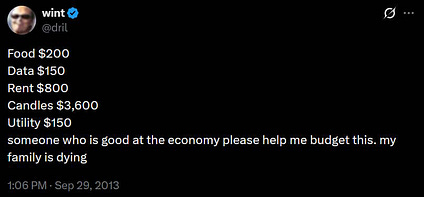Dist on track to eradicate extreme poverty by Nov – The Times of India

Progress Report: Eradication of Extreme Poverty in Thiruvananthapuram District in Alignment with Sustainable Development Goals
Overview of Progress Towards SDG 1: No Poverty
The Thiruvananthapuram district is making significant strides towards the complete eradication of extreme poverty, a primary objective of Sustainable Development Goal 1 (No Poverty). The district has successfully lifted 94.86% of identified extremely poor families out of poverty, with a target for complete eradication by November 2024. To date, 24 local bodies have been declared free from extreme poverty.
- Identified Families: 6,250
- Families Lifted from Poverty: 5,929
- Achievement Rate: 94.86%
Multi-faceted Interventions Aligned with Global Goals
A comprehensive micro-plan has been implemented, addressing poverty through a multi-sectoral approach that aligns with several Sustainable Development Goals (SDGs).
-
SDG 1 (No Poverty) & SDG 11 (Sustainable Cities and Communities): Housing and Shelter Initiatives
Secure housing is recognized as a critical component in poverty eradication. Efforts have been concentrated on providing safe and adequate shelter.
- New houses have been secured for 332 of the 1,219 families identified as needing only shelter.
- Housing improvement and renovation projects are underway for 505 families.
- Land has been provided to 284 families requiring both land and housing, facilitated through local government projects and partnerships, such as with the K Chittilappilly Foundation (SDG 17: Partnerships for the Goals).
- Remaining families are being granted title deeds on revenue land to ensure land tenure security.
-
SDG 2 (Zero Hunger) & SDG 3 (Good Health and Well-being): Fulfillment of Basic Needs
The project ensures that fundamental needs for nutrition and health are met, contributing directly to SDG 2 and SDG 3.
- Food assistance has been provided to 2,658 families.
- Comprehensive health services, including medicines, palliative care, and support equipment, have been delivered to 2,891 families.
-
SDG 10 (Reduced Inequalities) & SDG 16 (Peace, Justice and Strong Institutions): Enhancing Social and Financial Inclusion
To reduce inequality and ensure access to services, the project focused on providing legal identity and financial inclusion, key targets of SDG 10 and SDG 16.
- All families lacking basic documents were provided with over 13 types of essential documentation, including Aadhaar cards, voter IDs, ration cards, and bank accounts.
- Livelihood support through the Kudumbashree’s Ujjeevanam project has assisted 343 families in improving their income.
-
SDG 4 (Quality Education): Securing Future Generations
Ensuring access to education for children from vulnerable families is crucial for breaking the intergenerational cycle of poverty.
- Children who have passed Class X are given opportunities for further education in local institutions.
- Support includes the provision of free bus passes and study materials to remove barriers to continued learning.
Analysis of SDGs, Targets, and Indicators
1. Which SDGs are addressed or connected to the issues highlighted in the article?
- SDG 1: No Poverty
- SDG 2: Zero Hunger
- SDG 3: Good Health and Well-being
- SDG 4: Quality Education
- SDG 11: Sustainable Cities and Communities
2. What specific targets under those SDGs can be identified based on the article’s content?
-
SDG 1: No Poverty
- Target 1.1: Eradicate extreme poverty. The article’s central theme is the district’s plan to “be free from extreme poverty by Nov 1” and the achievement of lifting “94.86% of the families identified as extremely poor… out of extreme poverty.”
- Target 1.2: Reduce poverty in all its dimensions. The article mentions that families were identified as extremely poor based on a multi-dimensional assessment including “food, health, housing and income,” which aligns with reducing poverty beyond just income levels.
- Target 1.3: Implement social protection systems. The provision of services like “food, medicines, palliative care and health support equipment” and assistance through the “Kudumbashree’s Ujjeevanam project” represents the implementation of social protection measures for the most vulnerable families.
- Target 1.4: Ensure equal rights to economic resources and access to basic services. The article highlights efforts to ensure families have access to basic documents like “Aadhaar, voter ID, ration card and bank accounts” and are provided with “land” and “title deeds,” which are crucial for economic inclusion and access to services.
-
SDG 2: Zero Hunger
- Target 2.1: End hunger and ensure access to food. The article directly addresses this by stating that one of the factors for identifying poverty was “food” and that “2,658 families received food” as part of the intervention.
-
SDG 3: Good Health and Well-being
- Target 3.8: Achieve universal health coverage. The program provided “medicines, palliative care and health support equipment” and ensured that “2,891 families received health services,” which contributes to ensuring access to essential health care for the poor.
-
SDG 4: Quality Education
- Target 4.1: Ensure free, equitable and quality primary and secondary education. The article mentions that “Children from extremely poor families who passed Class X are given opportunities for further education,” supported by “free bus passes and study materials,” which promotes continued and equitable access to education.
-
SDG 11: Sustainable Cities and Communities
- Target 11.1: Ensure access to adequate, safe and affordable housing. The article details specific actions to address housing needs: “houses were secured for 332 of these families,” “Renovation is under way for 505 families,” and land and housing construction are in progress for “284 families.”
3. Are there any indicators mentioned or implied in the article that can be used to measure progress towards the identified targets?
-
For SDG 1 (No Poverty)
- Indicator for Target 1.1/1.2: The percentage of identified extremely poor families lifted out of poverty (94.86%). The absolute numbers are also provided: 5,929 families out of 6,250 were freed from extreme poverty. The number of local bodies declared free from poverty (24) is another progress marker.
- Indicator for Target 1.3: The number of families receiving social protection services, such as food (2,658), health services (2,891), and assistance through specific projects (343 via Ujjeevanam).
- Indicator for Target 1.4: The number of families provided with essential documents (all families lacking them received over 13 documents). The number of families provided with land and title deeds (part of the 284 families needing land and housing).
-
For SDG 2 (Zero Hunger)
- Indicator for Target 2.1: The number of families that received food support (2,658).
-
For SDG 3 (Good Health and Well-being)
- Indicator for Target 3.8: The number of families that received health services, including medicines and palliative care (2,891).
-
For SDG 4 (Quality Education)
- Indicator for Target 4.1: The number of children from extremely poor families who passed Class X and are being supported for further education.
-
For SDG 11 (Sustainable Cities and Communities)
- Indicator for Target 11.1: The number of families provided with new housing (332), housing renovations (505), and land for housing (284).
4. Table of SDGs, Targets, and Indicators
| SDGs | Targets | Indicators Identified in the Article |
|---|---|---|
| SDG 1: No Poverty | 1.1 Eradicate extreme poverty. 1.2 Reduce poverty in all its dimensions. 1.3 Implement social protection systems. 1.4 Ensure access to basic services and resources. |
– 94.86% of identified families (5,929 out of 6,250) lifted out of extreme poverty. – 24 local bodies declared free from extreme poverty. – 2,658 families received food; 2,891 received health services. – All families lacking documents received Aadhaar, voter ID, ration cards, etc. |
| SDG 2: Zero Hunger | 2.1 End hunger and ensure access to food. | – 2,658 families received food. |
| SDG 3: Good Health and Well-being | 3.8 Achieve universal health coverage. | – 2,891 families received health services, medicines, and palliative care. |
| SDG 4: Quality Education | 4.1 Ensure free, equitable and quality education. | – Children who passed Class X are given opportunities for further education, free bus passes, and study materials. |
| SDG 11: Sustainable Cities and Communities | 11.1 Ensure access to adequate, safe and affordable housing. | – 332 families secured houses. – 505 families received housing improvements/renovation. – 284 families are being provided with land and housing. |
Source: timesofindia.indiatimes.com

What is Your Reaction?
 Like
0
Like
0
 Dislike
0
Dislike
0
 Love
0
Love
0
 Funny
0
Funny
0
 Angry
0
Angry
0
 Sad
0
Sad
0
 Wow
0
Wow
0















































/environment-climate-change-and-health-(ech)/water-sanitation-hygiene-and-health-(wsh)/landfill-tuvalu-36092.tmb-1200v.jpg?sfvrsn=5c21fe40_1#)


.jpg.webp?itok=0ZsAnae9#)


























